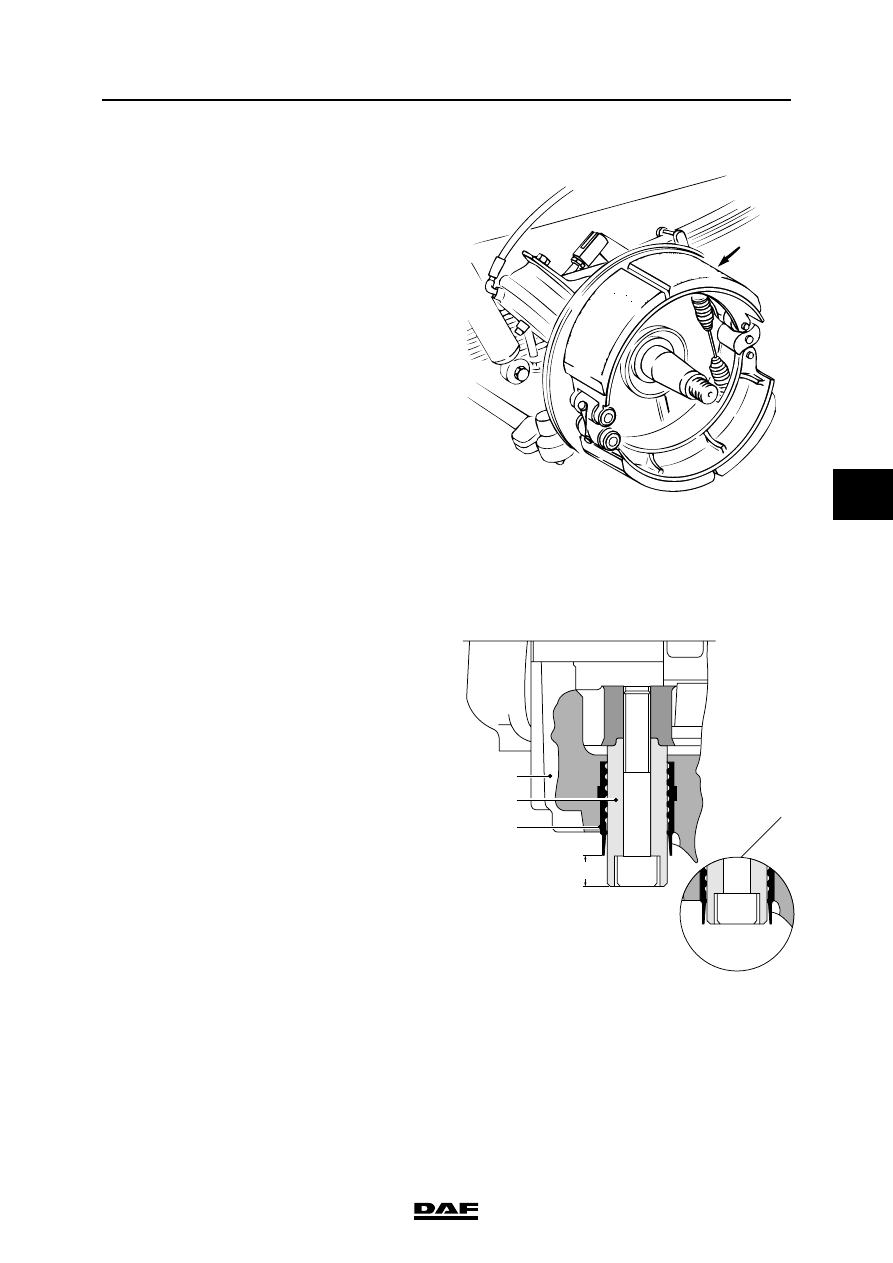DAF CF65, CF75, CF85 Series . Manual - part 911

©
200423
2-29
Inspection and adjustment
BRAKE SYSTEM AND COMPONENTS
ΧΦ65/75/85 series
6
5
Glazing of brake linings
"Glazing" is the slow deterioration of the brake
lining's coefficient of friction. This is caused by
very light braking. Assessment of the braking
surface is very difficult.
Glazing only rarely occurs with modern linings.
The wearing surface of the lining collects small
particles of materials having lubricant properties.
Generally, these particles are removed by
braking hard a view times, or by turning the lining.
This creates a new wearing surface.
The stability of the coefficient of friction may vary
considerably, depending on the quality of the
lining.
It is therefore vital that original brake linings be
used at all times.
2.19 INSPECTION, BRAKE PADS
Inspecting Knorr SB7000 brake pads
With wheels fitted:
If the guide sleeve (4) no longer protrudes (C)
from the guide bush (6) but is flush with it
(detail A), the brake pad thickness
must be inspected with the wheels removed.
See "Technical data".
R600132
min. 75%
C
1
4
6
R600481
A